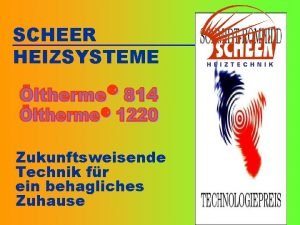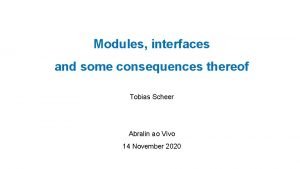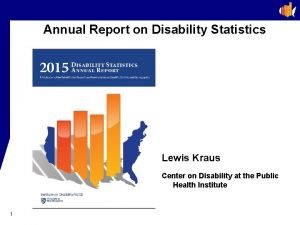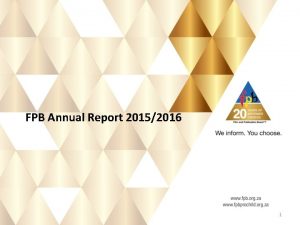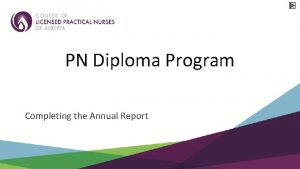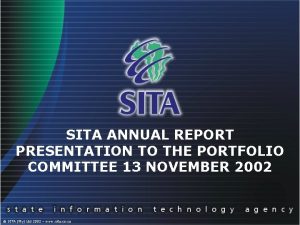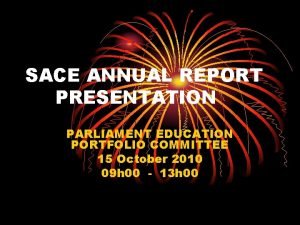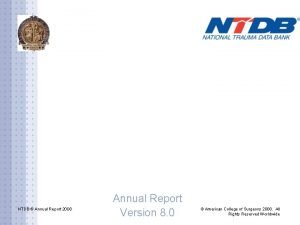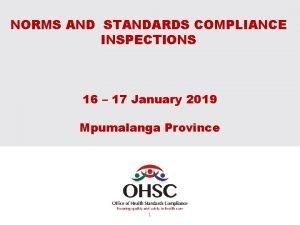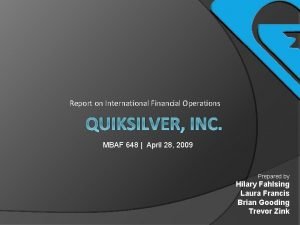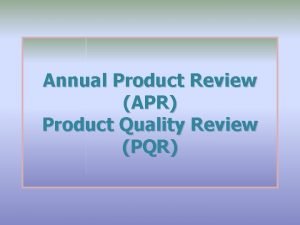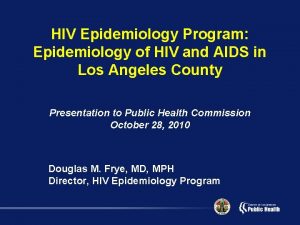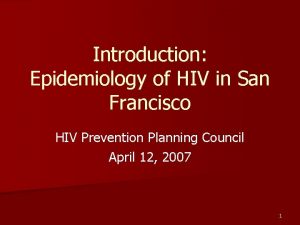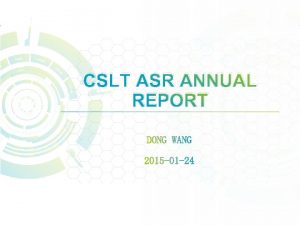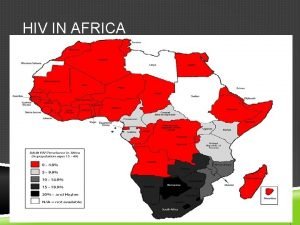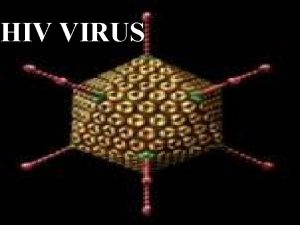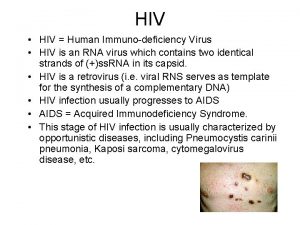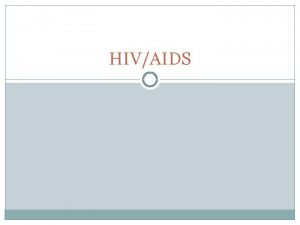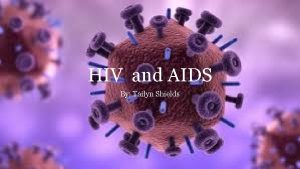HIV Epidemiology Annual Report 2015 Susan Scheer Ph


















- Slides: 18

HIV Epidemiology Annual Report 2015 Susan Scheer, Ph. D, MPH Director, HIV Epidemiology Section ARCHES Branch Strategies to Address Disparities Hyman Scott, MD, MPH Medical Director, Clinical Research Bridge HIV


Outline v Key highlights from the recently released HIV Epidemiology Section’s 2015 Annual Report including trends in key indicators § Encouraging trends on the population level § Overall declines in new HIV diagnoses § Declines in deaths and late diagnoses § Care and treatment items along the HIV care continuum § Not all San Franciscans have experienced the same improvements; significant health disparities identified § By race/ethnicity, particularly African-Americans, in treatment and care outcomes, survival and new diagnoses § Gender disparities in survival and viral suppression § People who are homeless have very low engagement care and viral suppression v Efforts by Getting to Zero to Address Identified Disparities § Supporting the existing HIV prevention, care, and treatment programs. § Emphasis on achieving health equity through innovative programs with measurable objectives.

Encouraging Trends among Persons living with HIV and New diagnoses § Overall 93% of PLWH are aware of their HIV status § New diagnoses decreased 17% between 20142015 § Number of deaths is leveling § Survival is improving; 60% of PLWH >50 yrs § Late diagnoses declined from 21% in 2012 to 16% in 2015

Improvements in the HIV Care Continuum 160 Median Days 147 140 2012 Diagnosis 120 2014 Diagnosis 131 2013 Diagnosis 100 88 80 70 60 70 49 40 30 20 26 14 7 8 7 0 DX to Care to ART to VSP DX to VSP

Disparities and Health Inequities: New HIV Diagnoses § New Diagnoses among African-Americans have remained stable between 2006 and 2015; all other racial/ethnicities have seen a decline in the number of new diagnoses § African-Americans have the highest rate of HIV infection among all racial/ethnicities § People ages 30 -39 are the group most likely to be diagnosed with HIV; Ages 25 -29 are the second most likely § Consistently, over 70% of newly diagnosed cases are among MSM § No decline in the proportion of homeless persons diagnosed with HIV -- between 2006 to 2013 approximately 10% of all new diagnoses are among the homeless

Disparities and Health Inequities: Late HIV Diagnosis by Race/Ethnicity 35% 2012 Diagnosis % of Late Diagnoses 30% 25% 20% 15% 31% 2013 Diagnosis 32% 28% 2014 Diagnosis 2014 Overall 24% 22% 20% 19% 17% 20% 17% 16% 14% 13% 10% 5% 0% 0% White African American Latino API

Disparities and Health Inequities: Survival after AIDS 3 -year survival 100% 91% 86% 88% 80% 93% 90% 92% 93% 90% 70% 5 -year overall 88% 83% 79% 95% 90% 86% 85% 91% 87% 82% 87% 81% 75% 60% 50% 40% 30% 20% 10% al e fe m an s Tr Fe m al e e al M ex ua l er os et H SM -P W ID ID PW M I SM M tin n/ P ia As er Am n La hi te W ca o 0% ic an 0% Af ri Survival Probability 90% 93% 5 -year survival

Disparities and Health Inequities: Viral Suppression

Getting to Zero Addressing Unmet Needs Zero new HIV infections Zero HIV deaths Zero stigma and discrimination

Strategic priorities for San Francisco Getting to Zero Consortium City-wide coordinated Pr. EP program Rapid ART start with treatment hubs Linkageengagementretention in care Reducing HIV stigma Vision Committee for each initiative is Become the first municipal jurisdiction in the United States developing metrics to achieve the UNAIDSaction vision ofplan, “Getting to Zero” and milestones. HIV Prevention, Care, and Treatment Programs

Supporting the Foundation Population Community Partners Youth Homeless Youth Alliance, Larkin Street Youth Services, San Francisco AIDS Foundation (SFAF) DREAAM African American MSM SFAF Black Brothers Esteem, DREAAM, Rafiki Wellness. Lyon-Martin. Latino MSM Instituto Familiar de la Raza, Mission Neighborhood Health Center, AGUILAS, SFAF El Grupo. Trans women Asian and Pacific Islander Wellness Center, El/La, St James, Instituto Familiar de la Raza, Native American AIDS Project. People who are affected by homelessness Homeless Youth Alliance, Glide, San Francisco AIDS Foundation. SFDPH/City investment in HIV and GTZ is central to our efforts.

Increasing Pr. EP uptake among MSM of color, young MSM, and Trans women • Community-based – Increase Pr. EP services for African American MSM, Latino MSM, young MSM, and Transwomen. – Emergency Truvada for youth unable to use patient assistance programs. >300 Pr. EP starts – Pharmacy Demo Project. among these priority populations • SFDPH – Pr. EP Coordinator and Pr. EP Navigator to support a Tele -Pr. EP program in SFDPH Primary Care. **Award GTZ Pr. EP RFPs in 2017**

Project Pride • Increase user knowledge and interest in Pr. EP – Social marketing campaign, Popular Opinion Leader • Increase linkage of focus populations to Pr. EP – City-wide Pr. EP coordinator and navigator using innovative social media strategies – “Data-to-Pr. EP”– use of STI surveillance to link patients diagnosed with rectal STIs and syphilis to Pr. EP – Pr. EP navigators Group: share best practices • Increase primary care provider engagement in Pr. EP – Public Health Detailing

Expand City-wide RAPID Program • Focus on providers serving MSM of color and youth. – Evaluation of process and outcome measures, stratified by age, race/ethnicity, and gender. • Academic Detailing – Provider training and technical assistance for RAPID hubs across SF. • LINCS RAPID Specialist – Support RAPID implementation for all newly diagnosed patients in SF. Decrease time from diagnosis to viral suppression.

Increasing Retention and Re-engagement in Care • Increasing support services for Persons living with HIV – – Community-based Intensive Case Management (via RFP) Addressing Food Insecurity (via RFP) Increasing Employment Training (via RFP) In-home Support for those over 50 (via RFP) • ZSFGH PHAST Team at Ward 86 • Expanded Navigation services – LINCS Team (MAC AIDS Yr. 2) – Data to Care Increase viral suppression among those most likely to be out of care.

Addressing Stigma • Develop an anti-stigma initiative (via RFP) – Stigma is an important barrier for HIV prevention, care, and treatment. – Create an initiative with sustainable impact on the community and providers. – Representation from disproportionally impacted communities: young MSM and MSM >50; MSM of color; and women at risk. Increase capacity to address HIVrelated stigma in SF.

www. Getting. To. Zero. SF. org Steering Committee Susan Buchbinder Susana Cáceres David Gonzalez Diane Havlir Joe Hollendoner Jenna Rapues Hyman Scott Tracey Packer Jeff Sheehy Chip Supanich Lance Toma Shannon Weber Dana van Gorder Rafael Velazquez Many thanks to the >200 members for all of their volunteer work!
 Scheer heizung
Scheer heizung Tobias scheer
Tobias scheer Aashto annual meeting 2015
Aashto annual meeting 2015 Disability statistics annual report
Disability statistics annual report Irlebird
Irlebird Kantar annual report
Kantar annual report Annual report conclusion
Annual report conclusion Sma annual report
Sma annual report Diploma annual report
Diploma annual report Sita annual report
Sita annual report Eusa room bookings
Eusa room bookings Electranet annual report
Electranet annual report Sace annual report
Sace annual report National trauma data bank annual report 2020
National trauma data bank annual report 2020 Ohsc annual inspection report
Ohsc annual inspection report Quiksilver annual report
Quiksilver annual report Lindsay semler
Lindsay semler Sen annual review report example
Sen annual review report example Pqr pharma definition
Pqr pharma definition
